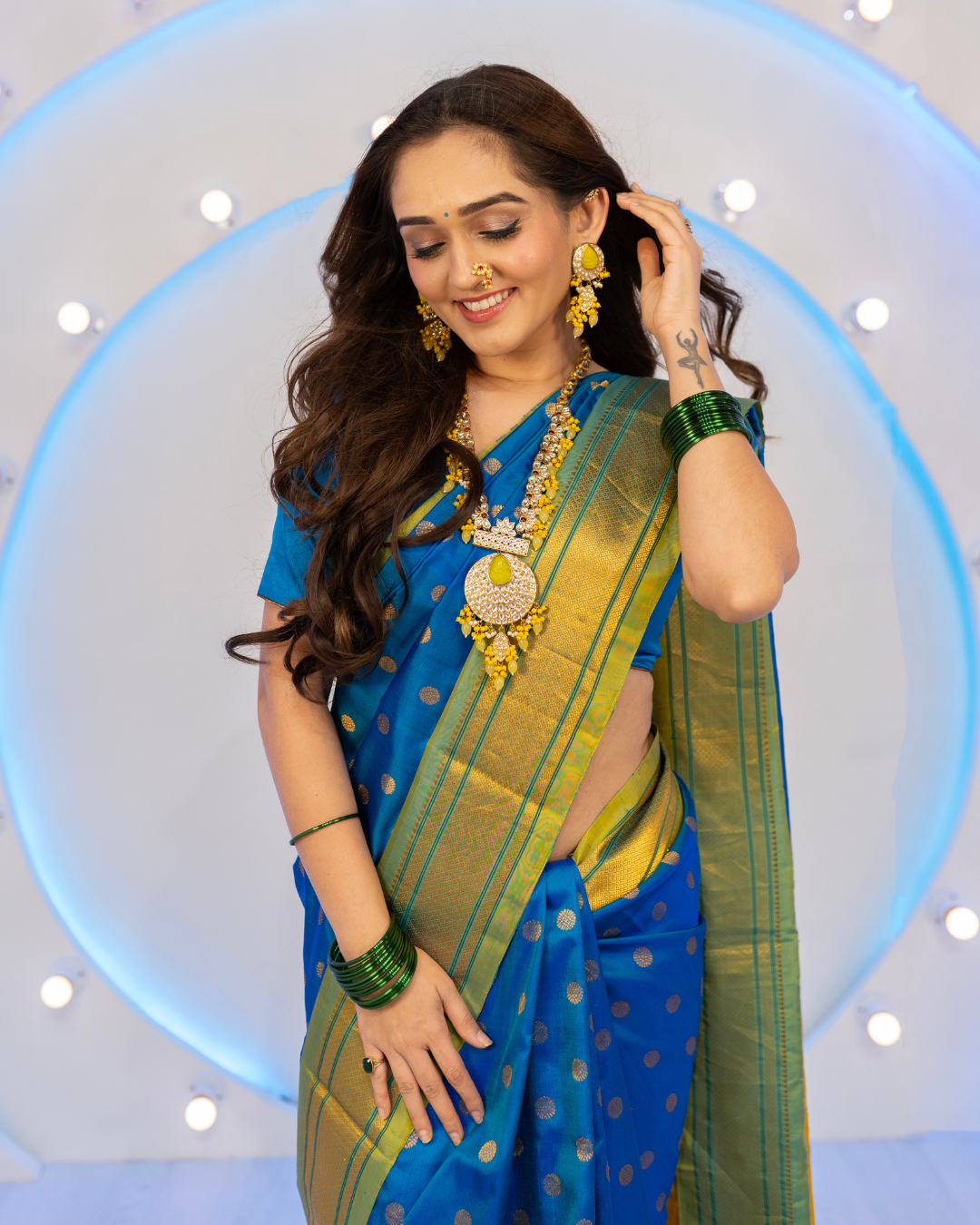Sustainability in Paithani Saree Production

Paithani Saree Production
The production of Paithani sarees is a shining example of sustainable craftsmanship, blending traditional handloom techniques with eco-friendly practices. As the world shifts towards sustainable fashion, Paithani sarees stand out for their commitment to preserving the environment, supporting artisans, and promoting cultural heritage. Here’s how sustainability is embedded in the production of Paithani sarees:
1. Handwoven Craftsmanship
-
No Machinery:
Paithani sarees are entirely handwoven on traditional looms, eliminating the need for energy-intensive machinery and reducing the carbon footprint. -
Artisan Expertise:
Each saree is created by skilled artisans, ensuring a slow, deliberate process that prioritizes quality over quantity, aligning with the principles of slow fashion.
2. Use of Natural and Biodegradable Materials
-
Silk Threads:
Paithani sarees use high-quality mulberry silk, a natural and biodegradable material that minimizes environmental impact. -
Natural Dyes:
Traditionally, natural dyes made from plants, flowers, and minerals are used, avoiding harmful chemical dyes that pollute water and soil. -
Zari Threads:
Genuine zari is made from gold or silver-coated threads, offering a sustainable alternative to synthetic metallic threads.
3. Preservation of Traditional Techniques
-
Cultural Sustainability:
By keeping age-old weaving techniques alive, Paithani saree production ensures the continuation of a rich cultural heritage. -
Skill Transfer:
Artisans pass down their knowledge to younger generations, fostering community development and sustaining livelihoods.
4. Low Waste Production
-
Precision in Weaving:
Handloom weaving minimizes fabric waste, as each saree is meticulously planned and woven to exact dimensions. -
Recycling and Reuse:
Excess silk threads and zari are often repurposed for other textile products, reducing material wastage.
5. Support for Local Economies
-
Empowering Artisans:
Paithani production provides steady employment to local weavers and artisans, supporting rural economies. -
Community-Centric Model:
Many weaving clusters in Maharashtra operate as cooperatives, ensuring fair wages and shared profits among artisans.
6. Minimal Environmental Impact
-
Energy Efficiency:
Handloom weaving consumes significantly less energy compared to power loom or machine-made textiles. -
Eco-Friendly Practices:
Traditional dyeing methods use natural resources responsibly, ensuring minimal environmental harm.
7. Longevity and Timelessness
-
Durable Fabrics:
The high-quality silk and intricate craftsmanship make Paithani sarees highly durable, reducing the need for frequent replacements. -
Heirloom Pieces:
Paithani sarees are often passed down through generations, embodying sustainability through prolonged use and reducing fast-fashion consumption.
Challenges to Sustainability
-
Cost of Materials:
The use of high-quality silk and genuine zari increases production costs, making sustainability a challenge for some artisans. -
Market Competition:
Machine-made imitations and synthetic sarees pose a threat to the traditional handloom industry. -
Awareness:
Educating consumers about the environmental and cultural benefits of authentic Paithani sarees is essential for promoting sustainable choices.
How to Support Sustainable Paithani Production
-
Buy Authentic Sarees:
Purchase from certified artisans or cooperatives to ensure you’re supporting ethical and sustainable practices. -
Choose Natural Dyes:
Opt for sarees made with natural dyes, which are safer for the environment. -
Promote Artisan Work:
Share the stories of Paithani artisans to increase awareness and appreciation for their craft. -
Care for Your Saree:
Proper maintenance extends the lifespan of your Paithani saree, reducing waste and preserving its beauty.
